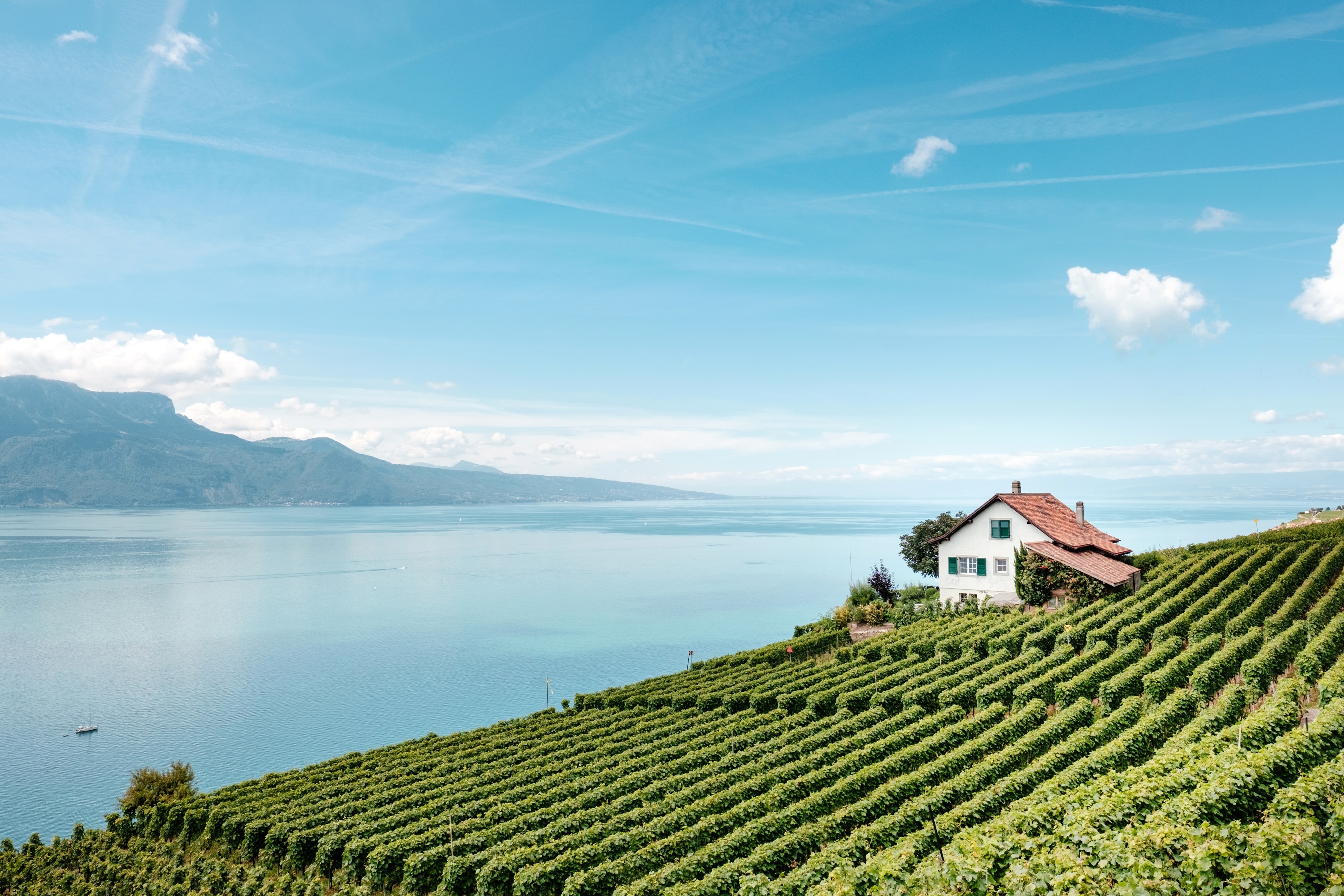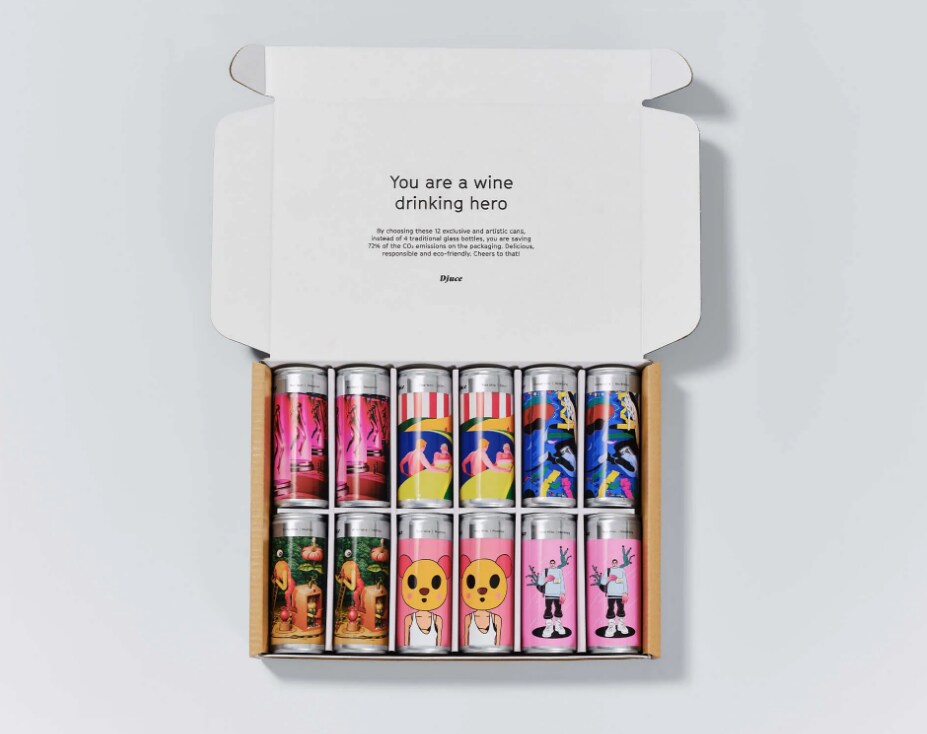Though interest for organic wine, or understanding the difference between “green” categories (organic, biodynamic, natural, sustainable…), has been low in most of the wine industry, it is now growing.
People have simply not wanted to consider that their wine is anything other than a pleasure, a luxury. But wine is also an agricultural product and as that, it is both contributing to global warming and heavily affected by it.
Wine - not always so “natural”
Most wine is, to be honest, quite an industrial product, made from massive monocultures with major effects on the environment, through water use, chemical use and biodiversity reduction.
But the wine industry is taking heed and making positive changes all over the world, and small players who have been working in harmony with nature all along are finally getting well deserved recognition.
Caring about organic and sustainable farming is not only key to the future of wine, it also regularly produces better grapes. And we all know by now: better grapes mean better wines.
Read more - Organic wine: Why sustainability in wine is a matter for all
Organic wine is in many ways the most important green category, not only because it is growing strongly but also because (unlike “sustainable” and “natural”) it has set global definitions and frameworks. In short, organic wine means that no synthetic pesticides, fungicides or herbicides are allowed, and no synthetic fertilizers can be used to fortify the soil.
The organic grape growing practices follow standards set by each wine producing country’s national government and the vineyards are inspected and certified by either government bodies or approved independent certification organizations.
No synthetic fertilizer or chemicals permitted
Instead of synthetic fertilizer, natural compost is used for enriching the soil while cover crops protect it, and pest control can be managed through stimulating natural predators to take up habitat (such as owls or hawks, or even ladybirds). Smart solutions like pheromones are used to confuse insects that would otherwise damage the vines.
Organic wines cannot claim to be “healthier” than conventionally farmed wine, but if you want to avoid pesticide residues, those residues tend to be higher in wines from conventionally grown grapes. Though they are still generally - though not always - under the legal limits.
Organic wine in the USA - a stricter definition
In Australia and Europe, organic wine regulations concern themselves almost exclusively with the practices in the vineyard. There are some regulations on the winemaking but these are not very limiting, at least when compared to the USA.
Here, making organic wine includes strict winemaking rules in order to call the bottle Certified Organic Wine. “Organic wine” from Australia or Europe is thus more like “Wine made from Organic Grapes” in the USA. Confused? Here is all you need to know:
The key issue is the preservative sulfur dioxide, which is added in most wine made around the world. In the world of American organic wine however, only very low (Certified Organic) or no (USDA Certified Organic) amounts of sulfur can be added.
Much like what is generally called “natural wine” in the rest of the world, making wine without adding sulfur dioxide requires a lot of the winemaker. The resulting wine can often be a bit unstable and it may not show up in ship shape at your table unless it has been cared for well by the shipping company, the retailer and you yourself.
For this reason, I tend to go for Wine from Organic Grapes when stateside, unless I know both the producer and the merchant. In addition, American regulations place strict restriction on which yeasts and other additives are permitted in winemaking.
Unfortunately, organic wine still has a negative connotation in some parts of the world. This stems from the early days of organic winemaking when the quality was occasionally lacking, or from the American regulations on sulfur dioxide, in the case of US wines. Today however, many of the world’s very best wines are organically grown. DRC? Organic since 1988. Ridge? Organic.
Organic wine - not a guarantee for “sustainable”
An organic certification is not the perfect solution for the environmentally conscious. The organic certification focuses almost exclusively on the chemical use in the vineyard and does not require a wine to be overall “sustainable”.
Many wineries think further, but it is entirely possible to have an organic wine and not care about the carbon footprint, waste production or water usage of the winery. (Partially for this reason, there are sustainability certifications. These have advantages and disadvantages as well, which we will expand more on in a later article in this series.)
Finding an organic wine in a heavy glass bottle always blows my mind, as the bottle weight leads to a greater total carbon footprint than anything done in the winery!
Certified is still better than not
Nevertheless, the organic certification is one of the most solid and widely available guarantees for a wine from grapes made without harmful chemicals. As more consumers ask for organic wines, producers have taken o saying, “We are almost organic, but…”. In my opinion, this can often be a cop-out by the winery.
Arguments such as “it loads too much copper in the soil,” “it’s not environmentally friendly because I have to drive my tractor more,” or “it’s too much paperwork” are common and not entirely wrong.
But for the sake of the consumer’s trust, I encourage these wineries to nevertheless get certified. Without it, it’s impossible for buyers and consumers to know which wineries are really “almost organic, but…” and which ones are just greenwashing and using pesticides on a regular basis.
Be part of the movement
As more consumers care about eating and drinking “green”, it is an exciting time for wineries to be recognized for taking a sustainable path forward. Soils with a natural balance tend to make for happy grapes which express their personalities, which in turn results in more interesting wines. That, in addition to being a better choice for the future of our vineyards, makes me a happy wine drinker.
Organic wine in numbers
- Global organic wine consumption: 3.6%
- Swedish organic wine consumption: 22% (The strongest organic wine market in the world. As an example, tiny Sweden makes up 49% of Australia’s organic wine exports!)
- 10% of French vineyards are now organic
- Approximately 1.5% of California vineyards are Certified Organic. Up ca 30% between 2015-2018.
- By 2022, 1 billion bottles of organic wine will be consumed
- Global organic wine consumption has doubled between 2012-2017
- The EU produces 90% of the world’s organic wine
- It takes up to 4 years to convert a vineyard from conventional to certified organic





